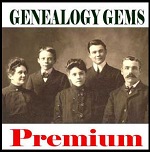by Lisa Cooke | Dec 19, 2013 | 01 What's New, images, Video
Can 100 years be packed into 10 minutes? This YouTube video attempts to do it!
(Warning: contains some graphic images)
The video also illustrates how the movie camera has captured our triumphs and tragedies for over 100 years.
Do you have old family movies? Consider posting them on YouTube with relevant descriptions that will help others find and watch them. Just like old photos, old film can play a ![]()
 significant role in our family history, and the Internet provides a forum for sharing them. If you have a free Google account (perhaps you use Gmail or another Google service) then you can use that account to activate your own YouTube channel.
significant role in our family history, and the Internet provides a forum for sharing them. If you have a free Google account (perhaps you use Gmail or another Google service) then you can use that account to activate your own YouTube channel.
You can learn how to get your free YouTube channel up and running at my upcoming class at RootsTech2014 called How to Use YouTube for Family History: Setting Up Your Own YouTube Channel (RT1508) Thursday, February 6 at 10:30 AM in Room: Ballroom H
by Lisa Cooke | Nov 29, 2013 | 01 What's New, Gifts
This year I’m offering three great Holiday Bundles, available for 4 days only–through Cyber Monday (12/2/2013). Check out these extra-special genealogy gift ideas–for yourself, a loved one, or as separate gifts for more loved ones.

The eBook Bundle. Get a copy of each of my books in e-book format: How to Find Your Family History in Newspapers, Turn Your iPad into a Genealogy Powerhouse, The Genealogist’s Google Toolbox and Genealogy Gems: Ultimate Research Strategies.
Bundle price of $29.95
Over 40% off the retail price of $50.80!

The Print Book Bundle. Prefer print? Get all 4 of my books in paperback instead of ebook format: How to Find Your Family History in Newspapers, Turn Your iPad into a Genealogy Powerhouse, The Genealogist’s Google Toolbox and Genealogy Gems: Ultimate Research Strategies.
Bundle Price: $49.95
Over 40% off the retail price of $84.80!
 Premium + NEW EXCLUSIVE BONUS EBOOK!
Premium + NEW EXCLUSIVE BONUS EBOOK!
 Whether you are subscribing for the first time or want to add an extra year
Whether you are subscribing for the first time or want to add an extra year
to your existing Genealogy Gems Membership, this is the sale for you!
Premium members get so much more than most people realize!
The 1 year subscription provides access to:
- Over 100 exclusive Genealogy Gems Premium podcast episodes!
- Over a dozen of my most popular classes on video!
- The brand new video mini series: Get Started with Evernote!
- Genealogy Gems Newsletter Archive full of tips!
A bargain at $29.95. But this special also gives you a special FREE BONUS Gift: Lisa Louise Cooke’s 67 Best Tips, Tricks and Tools from Family Tree Magazine ebook (Retail value: $15.97)
Are you currently a Member? You can still take advantage of this offer – the extra year will be added to the end of your current membership, extending your expiration date by one year. You won’t miss a day’s worth!
This EXCLUSIVE ebook is a compilation of Lisa’s most popular articles from the pages of Family Tree Magazine. It’s 23 pages filled with innovative, usable ideas to help your research:
- Family History Freebies – 41 Genealogy Goodies
- On Assignment – How to conduct an effective family interview
- Undercover Genealogy– 10 investigative strategies to locate living relatives
- Using the David Rumsey Map Collection – How to access over 45,000 free digitized maps!
- Finding Newspapers Through Journalism’s Voyage West – A step-by-step guide.
- Organizing Your Hard Drive – Seven steps to organizing your computer files.
Happy shopping! And don’t delay – this sale ends on Cyber Monday December 2, 2013 at midnight PST.
Disclosure: This article contains affiliate links and Genealogy Gems will be compensated if you make a purchase after clicking on these links (at no additional cost to you). Thank you for supporting Genealogy Gems!
 significant role in our family history, and the Internet provides a forum for sharing them. If you have a free Google account (perhaps you use Gmail or another Google service) then you can use that account to activate your own YouTube channel.
significant role in our family history, and the Internet provides a forum for sharing them. If you have a free Google account (perhaps you use Gmail or another Google service) then you can use that account to activate your own YouTube channel.



